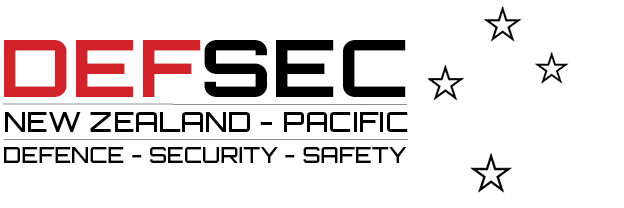
Although its application at airports is widely contested, behaviour detection has gained recognition in other contexts as a method for identifying not only potential terrorist activity, but also criminality and violence. Editor Nicholas Dynon explores the efficacy of behaviour detection beyond the airport.
The US Transport Security Administration’s (TSAs) Behaviour Detection and Assessment (BDA) program (as discussed elsewhere in this issue of NZSM) has come under sustained fire
from civil liberties groups and from government auditors. It is, argues its detractors, ‘unscientific’ and therefore susceptible to bias.
While that may be the case, it still begs the question: does it work? And not just in airports. What about sports and entertainment venues, transportation hubs and tourist attractions?
The case for ‘yes’ is a difficult one to convincingly argue, as the TSA has found. Behaviour detection (BD) does not lend itself to quantifiable science, and thus neither the TSA nor anybody else is likely to be able to provide a data-based legitimisation for BD anytime soon.
And yet there are many in law enforcement and security who swear by its efficacy.
“Given the complexities of behaviour detection at an airport, surely BD would be valuable when applied to protecting people in other crowded places where anomalous behaviour is far easier to determine and work with,” security consultant Lincoln Potter PSP told NZSM. “To write-off behaviour detection as just ‘security theatre’ is wrong, simply because you can’t prove it doesn’t work.”
No one is suggesting that BD is a silver bullet, but they do contend that as part of a layered approach to security it can potentially pick up what physical barriers, standard guarding, and electronic sensors and surveillance miss.
People versus weapons
Former Israeli Airports Authority security agent, Michael Rozin, believes that observing behaviour and approaching people based on observations of them is more effective than weapons-focused security measures such as metal detectors. There are two main factors that create acts of violence, he told Emergency Management magazine, “intent and means or weapons.”
“If you look through the years both in the United States and overseas, you see that the weapon itself as a factor has constantly been evolving and changing,” he said. “Bad guys have the ability to outsmart technology like metal detectors, X-ray machines, whatever is out there and come up with a weapon they can get into the secure environment and use to attack.”
Former Israeli airports security chief and behaviour detection expert, Rafi Ron, agrees. According to Ron, the value of behaviour detection lies in the fact that it looks for an intention to commit a crime rather than the weapon to be used to commit it.
Enjoying this article? Consider a subscription to the print edition of New Zealand Security Magazine.
“Security systems today are almost totally based on technology, specifically weapon detection,” he told CIO Online. “[After] 9/11, we recognized the fact that the weapon [a box cutter] was the minor element in the attack plan, and even so, the weapon that was chosen was allowed to be carried on board the aircraft. It led us to the conclusion that it is not enough to look for things, we have to look for malicious intentions.”
Ron also highlights the case of Richard Reid (the ‘shoe bomber’), a British terrorist who attempted to detonate an explosive device packed into his shoes while on an American Airlines Flight from Paris to Miami in 2001. In that case, technology failed to identify the threat.
According to Ron, “when you [a terrorist] have to overcome a certain technological screening process, you can find a way to overcome it, but human behavior is where you will fail. Because a person carrying out a major terrorist attack that will probably end his life as well as the lives of many others cannot be in a sane state of mind.”
Behaviour versus appearance
There exists a wide range of sources that list the types of behavioural indicators that security officers are tasked with using observation skills to detect. These include such indicators as:
- failing to make or maintain normal eye contact or becoming unusually flustered during casual interactions with pedestrians, officials or other people in the area
- exhibiting more than just a passing interest in security procedures at an event or area, or drawn to or away from a particular area for no apparent reason
- creating or attempting to create a distraction to direct the attention of others to or away from a certain area
- being dressed inappropriately for weather conditions, such as wearing a jacket or coat on a warm day or wearing sunglasses in overcast or poorly lit conditions
- carrying shopping, hotel or restaurant bags that are not recognisable as coming from within the area, or carrying baggage, backpacks or toolboxes that seem grossly out of place for the event or activity
- fidgeting, appears unusually nervous or perspiring profusely when conditions or activity levels do not warrant such behaviour
- refusing to leave when asked to do so, or returns later
- paying unusual attention to facilities or buildings beyond a casual interest. Attempting to take photos or make video or audio recordings in a secretive manner or doing so in an area that restricts such activities. Taking notes or measurements; counting paces; sketching floor plans, etc.
If this is starting to look like the controversial list of behavioural indicators used by the TSA, there are some key differences. At this point it’s important to note that BD is a term that describes a range of behaviour detection methodologies and approaches, rather than just one.
The behavioural indicators that various BD methods look for can be plotted on a continuum between ‘appearance’ and ‘behaviour’, with behaviour itself ranging from the more ‘passive’ (such as body language) to the more ‘active’ (such as taking photos and ‘casing’ a site).
The TSA approach to BD has been labelled as profiling precisely because it relies overly on appearance and passive behaviour indicators. Established research tells us that there simply is no established typology of skyjacker or terrorist, and therefore no statistically reliable indicator based on appearance attributes such as race, country of origin gender, age, clothing and perceived levels of anxiety.
It’s an issue that the US Secret Service faced in its report on the findings of the Safe School Initiative in 2004, which considered strategies for the prevention of school attacks. From detailed analysis of the 37 incidence of targeted school violence that occurred in the US between 1974 and 2000, they found that there was no accurate or useful profile of student perpetrators.
“The demographic, personality, school history, and social characteristics of the attackers varied substantially,” stated the report. “Knowing that a particular student shares characteristics, behaviors, features or traits with prior school shooters does not help in determining whether that student is thinking about or planning for a violent act.”
Rather than attempting to determine the ‘type’ of student who may engage in targeted school violence, the report recommended that focus instead be placed on a student’s ‘behaviours’ and ‘communications’ to “determine if that student appears to be planning or preparing for an attack.”
Available literature tends to side with BD methodologies that more squarely focused on behaviours rather than appearance. Additionally, there appears to be less conjecture around those methodologies that rely on ‘active’ behaviours (actions) as opposed to ‘passive’ behaviours (expressions, etc).
The difficulty is that in the security setting of entertainment venues, transportation hubs and tourist attractions, there may be a lack of visible preparatory activity by an attacker, and therefore no opportunity to note ‘antecedent conduct’, ‘behaviour patterns’ or ‘pre-incident indicators’ (PINs). Or it may be that there was behaviour to be detected but that security officers onsite lacked the necessary training and/or intuition to notice it.
Intuition versus science
It was seeing how the Israelis effected behaviour detection that led John Demand, a US law enforcement and private security veteran of 40 years, to focus on BD. According to Demand, “It is estimated that approximately 80 percent of what we perceive comes to us through vision”, thus observation and cognitive skills are the most important assets a law enforcement officer or security professional can possess.
“A long held false assumption is that individuals joining law enforcement or professional security have some innate capacity to observe unfolding situations faster and better than anyone else,” he wrote in PoliceOne.com. “More than ever, I am convinced that observation training needs to become part of every law enforcement (and security) officer’s skillset.”
According to Brian Johnson and Williamson Wallace, behaviour detection and assessment relies upon four elements: (1) determining a baseline; (2) identifying anomalies; (3) resolving anomalies; and (4) telling – which combine to form the acronym ‘DIRT’.
“Sometimes threats are easily and quickly analyzed by the intuitive side of your brain—for example, the presence of a weapon or assaultive/disruptive behaviour,” they wrote in Good Advice, Smart Strategy. “Other times, it may be more difficult and require using the analytical side of your brain to interpret potential danger.”
“The key to effective BDA is acknowledging your gut instincts (intuition) and allowing your brain to ask questions (analysis), without arbitrarily dismissing it as “probably nothing.”
According to Lincoln Potter PSP, there are varying arguments over whether intuition – and by implication behaviour detection – is something that one is born with or whether it can be learnt via training and practice.
He notes influential psychoanalyst Carl Jung’s four psychological prisms through which people experience the world: sensation, intuition, feeling and thinking, and that there are various systems of psychometric testing able to categorise individuals in this way. Identifying security officers more likely to excel at the ‘intuitive’ nature of BD via psychometric testing, says Potter, may be useful in the building of a BD capability.
As lessons learnt in aviation security are finding their way into the broader security arena, there are also an increasing variety of specialised BD training programs available to assist security professionals to develop their skills.
Apart from course-based training, Doug Reynolds, security director of the Mall of America in Minnesota, also points to the value of ‘red teaming’, where a scenario designed to get the attention of a security officer is played out. According to Emergency Management, “Indicators are set up in an area and the officer is watched to see how he or she responds and how the interview process goes.”
Another aspect that’s been key to that program’s success has been enlisting the assistance of workers at the mall — from sales assistants through to cleaners. According to Reynolds, “they are the subject-matter experts of their areas and notice when something doesn’t match typical behavior in that setting.”
Ultimately, despite being criticised as unscientific and as merely an exercise in security theatre, there is much expert opinion and anecdotal evidence to support the proposition that behavioural detection works – but only where the right type of behaviour detection methodology is applied. And it’s likely to work better where security officers with the right personality type are selected and provided with specialised training and a great deal of practice.
Why would it come any easier than this? After all, behaviour detection is akin to finding that one nefarious needle in a crowded security haystack.









